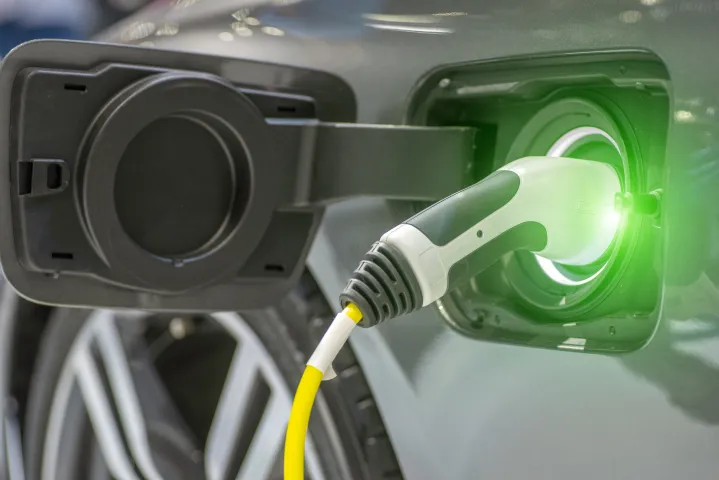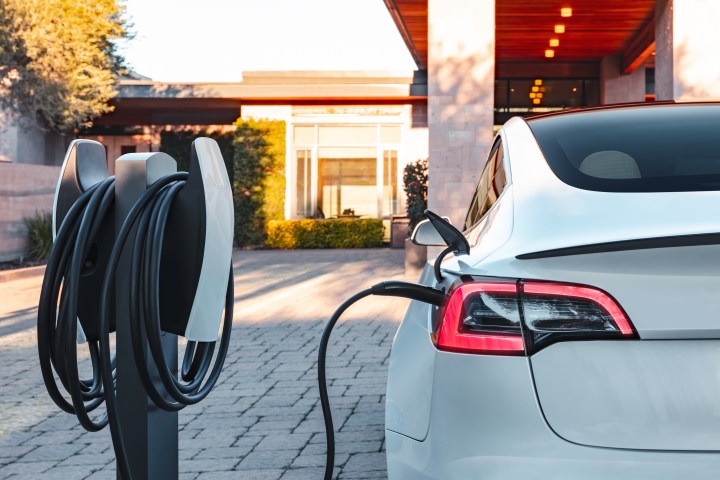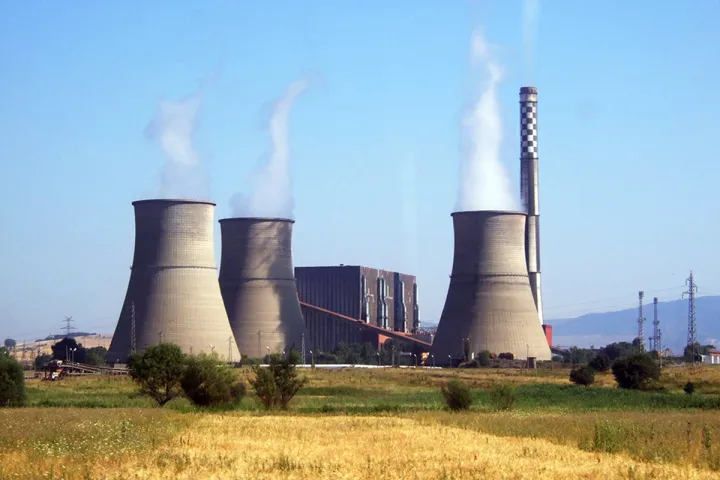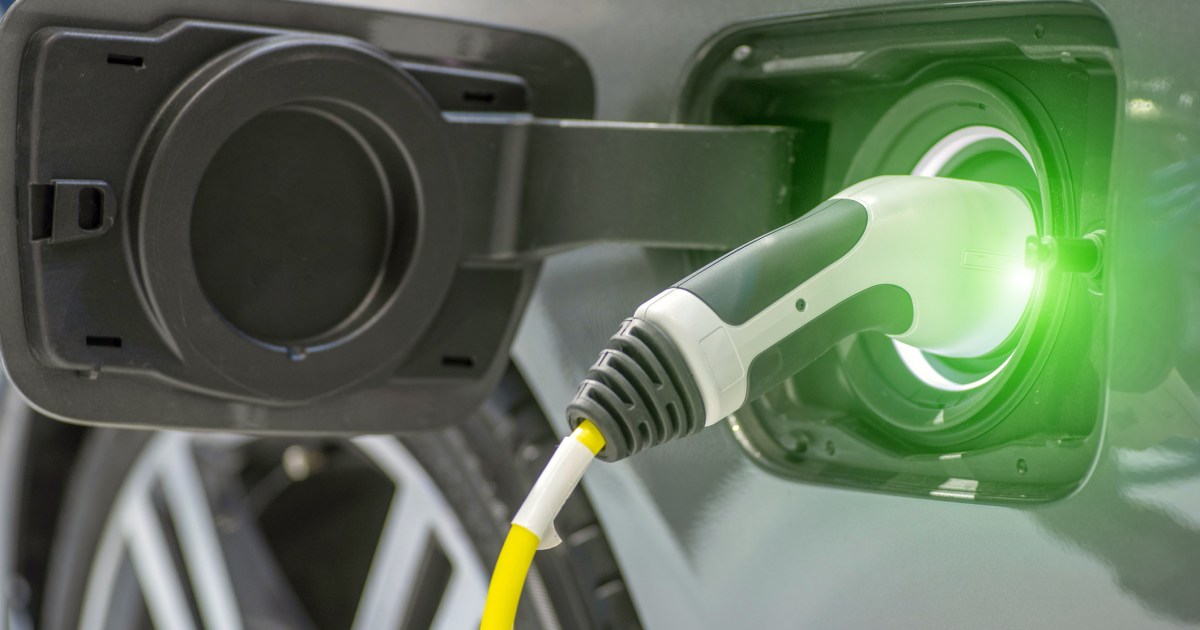
Cars are changing, and quick. While only a few years ago, the options for electric vehicles were limited and often low quality, these days there are tons of great options on offer — and over the next 10 years, they’re expected to get much better and much cheaper.
But there’s a common idea out there that the power grid can’t actually handle electrification. But is that really true, or is that just a misconception peddled by the fossil fuel industry that fears an end to its massive riches? Turns out, the grid will indeed be able to handle vehicle electrification — if the right steps are made to ensure that it can. As is the case with pretty much everything, it’s a little more complicated than that.
How much power do EVs need?

A study from the U.S. Department of Transportation suggests that the average American driver puts 13,500 miles on their car per year. As EVConnect.com notes, a typical EV requires around 3,857 kilowatt-hours of electricity per year. With 26.4 million EVs on the road, that will equate to around 102 terawatt hours (102 billion kWh) of electricity per year. That’s 2.5% of what the U.S. grid produced in 2020, but almost a hefty 7% of energy that went to residential usage. And while that doesn’t necessarily sound like much, it’s actually a massive chunk of energy production. You can’t necessarily just add 2.5% to energy production overnight.
Of course, we won’t have to add 2.5% to energy production overnight — these are forecasts for 2030, which is still six years away. Today, the grid can obviously handle the EVs on the road, especially since many EV drivers charge at home.
“For standard EVs from personal use, the current grid structure can keep up with the rate of EV adoption by consumers,” said Patrick Sullivan, CEO and co-founder of EV Realty, a company that develops EV charging hubs. “It is at a steady pace and. on average. most at-home charging systems only use approximately 11.81 kWh per day.”
This is part of the key to EV charging though — charging slowly over time, and at specific times, strains the grid less than charging rapidly at a fast charging station. Sure, in the end, the energy delivered is the same, but fast chargers require more advanced infrastructure and shorter bursts of a lot of power.
The changing power grid
Of course, this is actually part of a much larger discussion about the power grid in general. The fact is that while EVs are contributing to increased strain on the grid, there’s actually much more going on, and EVs actually only play a minor role. Technologies like AI, for example, require a lot of electricity to run, and as we use AI increasingly in our technology, the grid is going to have to supply power for that, too. In fact, estimates peg AI power needs as rising as high as 800TWh in 2026 — almost eight times higher than the expected needs of EVs in 2030.
That, of course, doesn’t take away from the power needs of EVs. But, as the power grid changes, so does power generation. More and more people are switching to solar for their homes, and for those that charge at home, this could mean charging an EV without having to rely on the grid at all. And that lessens the impact of EVs on the grid — while they would still consume 102TWh of energy in 2030, they wouldn’t all need it from the grid.

All of this is very speculative — and the ability for the grid to be able to handle vehicle electrification does depend o a number of different factors.
“For the first time in more than a decade, demand for electricity is growing, driven in part by EVs and other moves toward electrification that are occurring, including large data centers, crypto mining and the advent of AI, to mention a few additional sources that are driving demand,” said Steve Christensen, executive director at the Responsible Battery Coalition.
Christensen suggests a number of steps that can be taken to strengthen the electric grid, including better identifying where improvements in the grid need to be made, encouraging state regulators to require grid investments, and even establishing tax-exempt government bonds to fund critical infrastructure improvements.
“There is no single, or easy, solution, but if we want to have a modern society driven by electricity, the time to act is now.”

In general, smarter grid technologies and smarter charging technologies are likely to both lessen the load on the grid — and save consumers money. In fact, there are already EV chargers out there that can be set up to only charge at certain times of the day, when power is a little more freely available, and thus less expensive. Then, at peak times of the day, chargers stop delivering power to a vehicle, helping save money. A good example of this is the Savant EV Charger, which works with other Savant energy solutions in the home to lower costs.
EVs as a power storage solution
There’s another way that EVs may not only lessen the strain on the power grid, but help fortify and improve it. That’s because EVs, when not in operation, are essentially just big batteries, and those batteries can be put to use. Currently, EV owners commonly charge their cars at night when they get home from work. And it’s important that EVs are charged up when they need to be. But, for example, owners could set a range of charge that they need and allow their EVs to supply power to the rest of their home, or back to the grid, as needed.

This would require some changes in infrastructure, of course. Currently, EVs and EV chargers aren’t really set up to be able to supply power back to the grid on an as-needed basis. But we already have the technology to be able to supply power from residential batteries to the grid. Plenty of homes with solar panels are hooked up to batteries that store the energy collected by panels and can supply it back to the grid. In some cases, owners of homes with solar panels actually get paid by the power company instead of having to pay it. Of course, unless you have solar panels, you likely wouldn’t see simply owning an EV as a source of income. But power companies could at least provide EV owners that opt to use their EVs as a power supply a credit on their bill.
“EVs are a double-edged sword for our power grid — a massive drain on our current infrastructure, but also potentially the greatest power storage solution available to us,” said Bret Simon, Strategic Business Development leader at Exodigo. “Currently, millions of EV owners charge their cars at night when they get home from work, and millions more are expected to purchase EVs in the coming years. Those cars can serve as an emergency power solution for their owners (EV owners could tap into their cars in the event of an outage or offset usage during peak times), but they can be much more — they can be flexible grid storage tools for entire communities.”
This could actually go beyond simply making charging easier on the grid. As Simon mentioned, with the right setup, an electric vehicle could help power some or all of a home in the event of a power outage.
So … can the grid handle EVs?
Basically, yes. To be clear, the grid won’t be able to handle electric vehicle charging if nothing is done to improve it and EV adoption continues at current trends or accelerates. But that shouldn’t happen. With the right improvements to infrastructure and power generation, as well as technologies that can help put the power stored by EVs to good use, there’s no reason to assume that, all of a sudden, the grid will start failing in a few years simply because of EV charging.

